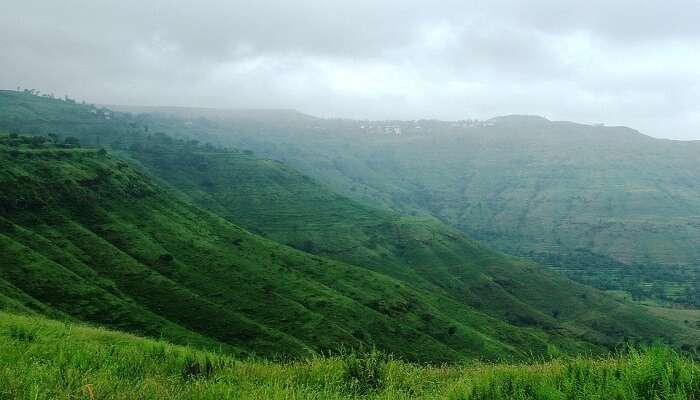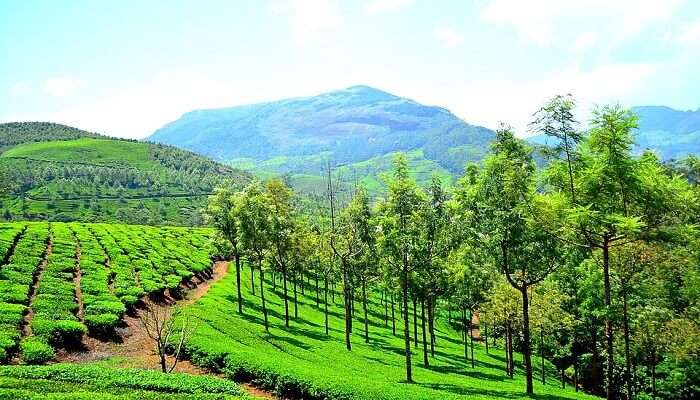Your Guide To Explore Dibru Saikhowa National Park Which Is A Biodiversity Hotspot
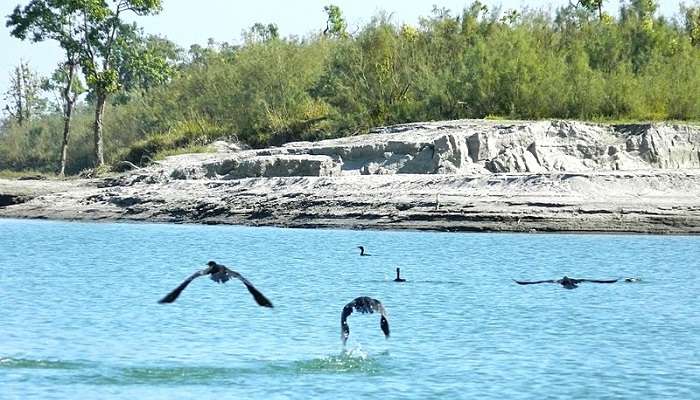
Nestled in the northeastern state of Assam, India, Dibru Saikhowa National Park is a biodiversity park. This lush landscape, formed by the confluence of the Brahmaputra and Lohit rivers, boasts a unique ecosystem of wetlands, grasslands, and semi-evergreen forests. Home to numerous endangered species, including the white-winged wood duck and Bengal florican, the park is a haven for wildlife enthusiasts and nature lovers. With its vibrant flora, diverse fauna, and breathtaking scenery, Dibru-Saikhowa offers visitors a chance to immerse themselves in the raw beauty of India’s wilderness. Whether you’re an avid birdwatcher, a photography enthusiast, or simply seeking tranquillity, this national park promises an unforgettable experience.
About Dibru Saikhowa National Park
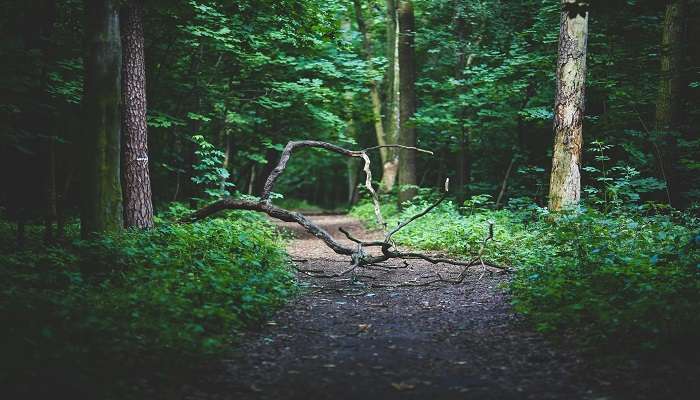
Dibru-Saikhowa National Park, situated in the districts of Dibrugarh and Tinsukia in Assam, India, has been a recognised Biosphere Reserve since July 1997. It covers an area of 765 square kilometres, including a core area of 340 square kilometres and a buffer zone of 425 square kilometres. The park is approximately 12 kilometres north of Tinsukia town. Its average altitude is 118 meters, varying between 110 and 126 meters. The Brahmaputra and Lohit rivers encircle it to the north and the Dibru River to the south. The park primarily comprises moist mixed semi-evergreen forests, moist mixed deciduous forests, canebrakes, and grasslands.
It is renowned as the largest salix swamp forest in northeastern India. It is characterized by a tropical monsoon climate with a hot, wet summer and a relaxed, typically dry winter. The annual rainfall fluctuates between 2,300 to 3,800 millimetres. The park serves as a sanctuary for numerous endangered species and boasts diverse fish. In December 2020, the Gauhati High Court halted permission granted to Oil India Limited for hydrocarbon exploration at seven sites within the protected area.
Must Read: River Rafting In Assam
Flora At Dibru Saikhowa National Park
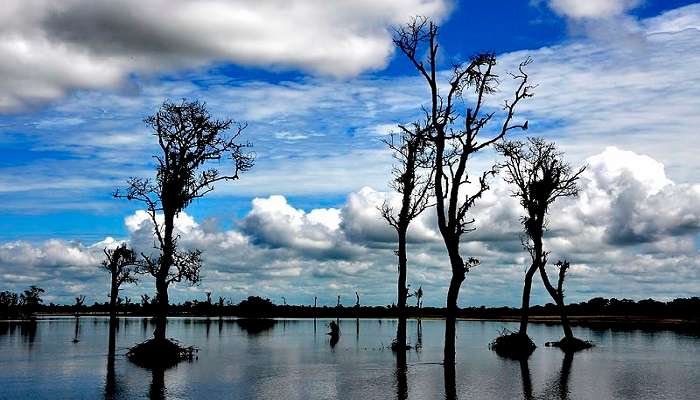
Image Credit: Dhruba Jyoti Baruah for Wikimedia Commons
Dibru-Saikhowa National Park, nestled in the Dibrugarh and Tinsukia districts of Assam, India, is a dynamic ecosystem flourishing with an array of flora. The park is a patchwork of diverse forests and grasslands, offering a rich habitat for numerous species. The park’s greenery primarily consists of semi-evergreen forests, deciduous forests, littoral and swamp forests, and patches of wet evergreen forests. The forest cover of the park is divided into three main categories: moist mixed forest, which comprises about 35.84% of the park; degraded forest, which accounts for 9.50%; and grassland, which covers roughly 21.25% of the park.
The park is a sanctuary for a range of tree species. These include Tetrasperma, Dillenia indica (Elephant Apple), Bischofia javanica (Bishop Wood), Bombax ceiba (Red Silk Cotton), Lagerstroemia parviflora (Crepe Myrtle), Terminalia myriocarpa (East Indian Almond), Mesua ferrea (Ironwood), Dalbergia sissoo (Indian Rosewood), and various species of Ficus (Fig trees). Beyond the trees, the park also showcases a variety of grass species. These include Arundo donax (Giant Reed), Imperata cylindrica (Cogon Grass), Phragmites karka (Reed Grass), and Saccharum Ravenna (Ravenna Grass). The park is also renowned for its orchids. It houses 35 species of epiphytic orchids, which grow on other plants, and eight terrestrial orchids in the ground.
Fauna At Dibru Saikhowa National Park
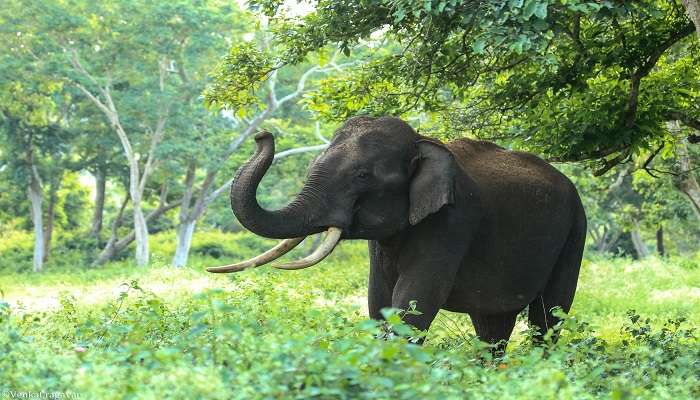
The area is home to 36 species of mammals, 12 of which are protected under Schedule 1 of the Wildlife (Protection) Act of 1972. These include the Bengal tiger, Indian leopard, clouded leopard, jungle cat, sloth bear, dhole, small Indian civet, Malayan giant squirrel, Chinese pangolin, Ganges dolphin, slow loris, pig-tailed macaque, Assamese macaque. It also houses rhesus macaque, capped langur, Hoolock gibbon, Asian elephant, wild boar, Sambar deer, hog deer, barking deer, Asiatic water buffalo, and feral horse. The park is one of the few places globally home to feral horses, descendants of horses that escaped from British Army stables in and around Tinsukia during World War II. Two species of monitor lizard inhabit the region, eight species of turtles, and eight species of snakes.
A variety of bird species have been recorded in the area, including the greater adjutant, ferruginous pochard, Jerdon’s babbler, black-breasted parrotbill, marsh babbler, puff-throated babbler, Jerdon’s bushchat, rufous-rumped grassbird, chestnut-crowned bush warbler, swamp francolin, and many more.
Suggested Read: Tea Estates In Assam
Opening Hours And Entry Fees
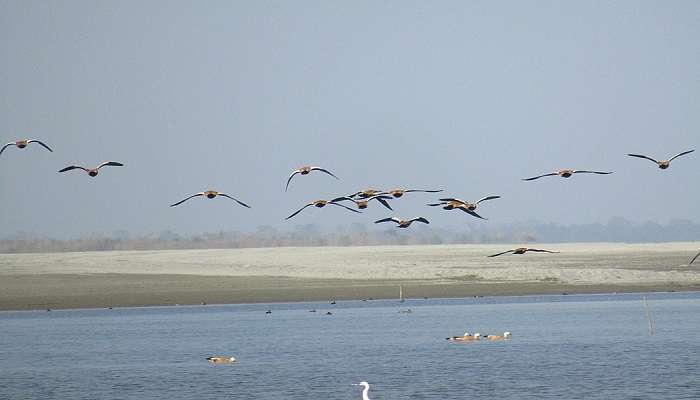
Image Credit: Pallabborsaikia for Wikimedia Commons
Dibru Saikhowa National Park, a stunning wildlife sanctuary nestled in Northeast India near the borders of Upper Assam and Arunachal Pradesh, welcomes visitors with its rich biodiversity. The park operates from 7:00 am to 8:00 pm, ensuring visitors can explore its beauty during daylight hours.
However, please note that entry is prohibited after sunset and before sunrise. The entry fee is Rs. 100/—for local visitors, while it is Rs. 500 for international visitors. Enjoy your visit to this remarkable sanctuary!
Best Time To Visit
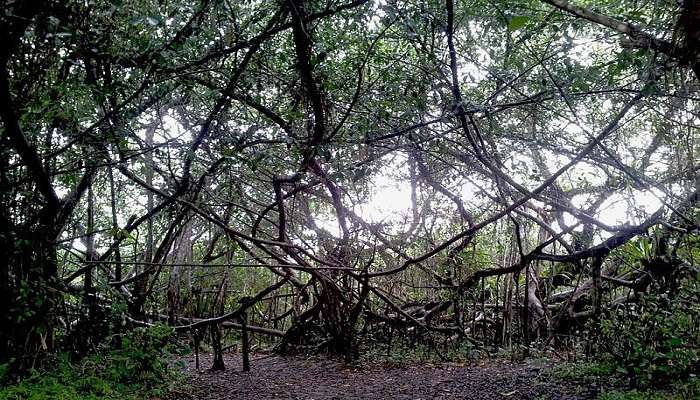
The best time to visit Dibru Saikhowa National Park is November to April. The weather is pleasant during these months, making it ideal for exploring the park’s natural beauty and diverse wildlife. This period offers a comfortable outdoor environment and maximizes the chances of encountering various animal species in their natural habitats. The cooler temperatures and clear skies provide a perfect setting for nature walks, bird watching, and river excursions, ensuring a memorable experience for all visitors.
Suggested Read: Things To Do In Assam
Ways To Reach
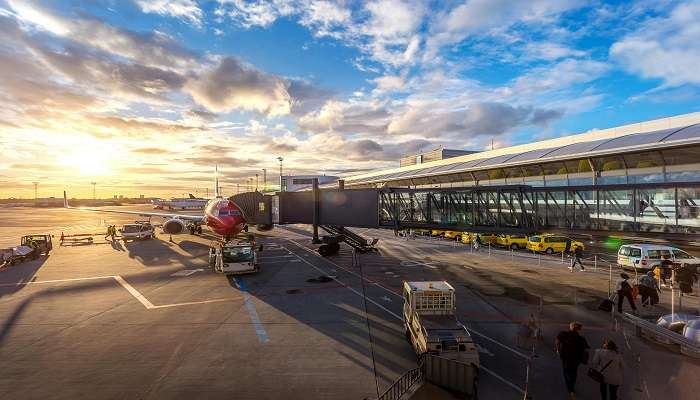
Reaching Dibru Saikhowa National Park in Assam, India, involves a combination of air, rail, and road travel. Here are some of the best ways to reach the zoo:
By Air
The nearest airport to reach Dibru-Saikhowa is Mohanbari (Dibrugarh Airport), which has flight connections from Kolkata to Delhi. Dibru-Saikhowa is just 70 Km from the airport, and you can hire a taxi to reach your destination.
By Railway
The nearest railway station to Dibru-Saikhowa is Tinsukia. Another close railhead is Dibrugarh, which is well-connected to major cities in India. You can take a taxi or local transport from these stations to the park.
By Road
Tinsukia is the nearest town to Dibru-Saikhowa, located 10 lm from the park’s Gujjan (Guijan) entry point and 50 km from Dhola. Several options are available for travelling from Tinsukia to Dibru-Saikhowa, including buses, auto rickshaws, and taxis, ensuring a convenient journey to the park.
Further Read: National Parks In Assam
Dibru Saikhowa National Park is a paradise for wildlife enthusiasts and nature lovers, from rare white-winged wood ducks to majestic feral horses. Its diverse ecosystems, including wetlands and grasslands, provide a haven for countless species. The park’s rich cultural heritage and the warmth of local communities add depth to the experience. Ready to go on an unforgettable journey? Book your trip to Assam today and discover the wonders of Dibru Saikhowa National Park. Immerse yourself in nature, witness incredible wildlife, and create memories that will last a lifetime. Don’t miss this opportunity to explore one of India’s most captivating destinations.
For our editorial codes of conduct and copyright disclaimer, please click here.
Cover Image Source: Rubul Deka for Wikimedia Commons
Frequently Asked Questions About Dibru Saikhowa National Park
What is the best time to visit Dibru Saikhowa National Park?
The best time to visit Dibru Saikhowa National Park is November and April. The weather is pleasant during this period, and the park is more accessible. The monsoon season (May to September) brings heavy rainfall, making navigating the park challenging.
What types of wildlife can be seen in Dibru Saikhowa National Park?
Dibru Saikhowa National Park is home to a diverse range of wildlife, including feral horses, Bengal tigers, leopards, elephants, and various species of deer. It is also a haven for birdwatchers, with over 500 species of birds, including migratory and resident birds like the Bengal florican and white-winged wood duck.
Are there any accommodation options available near Dibru Saikhowa National Park?
Yes, several accommodation options are available near Dibru Saikhowa National Park, ranging from budget guesthouses to mid-range hotels. Tinsukia, the nearest town, offers a variety of lodging options. Additionally, eco-camps and homestays near the park provide a closer experience to nature.
What activities can visitors engage in at Dibru Saikhowa National Park?
Visitors to Dibru Saikhowa National Park can engage in various activities such as wildlife safaris, birdwatching, boat rides on the Brahmaputra River, and trekking. The park offers unique opportunities for nature photography and experiencing the local flora and fauna.
Is it comfortable to visit Dibru Saikhowa National Park?
Yes, it is generally comfortable to visit Dibru Saikhowa National Park. However, it is essential to follow the guidelines provided by park authorities and stay with designated guides during safaris and treks. Avoid venturing into restricted areas and maintain a safe distance from wild animals.
People Also Read:
Dandenong Ranges National Park National Parks In Thailand Chitwan National Parks

Innovative Content Writer Focused on Producing High quality, Original Content that drives traffic and engages readers. Experienced in Content strategy and analytics to measure content performance using tools such as SQL, Power BI, Excel.



